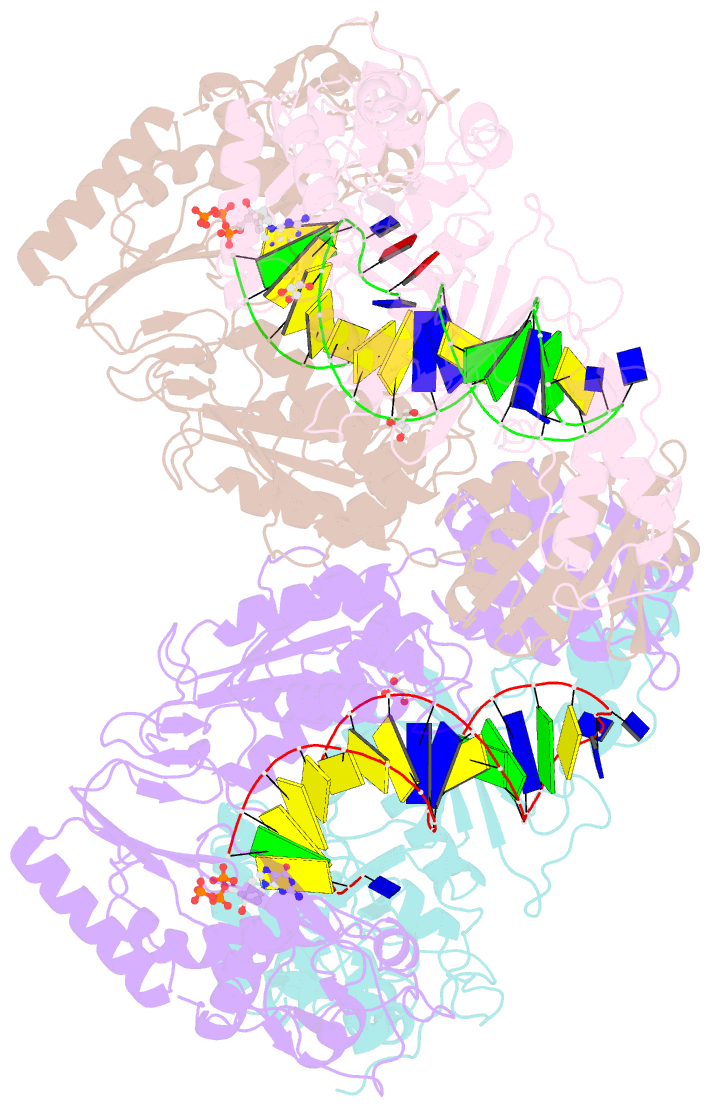Summary information and primary citation
- PDB-id
- 6ika; SNAP-derived features in text and JSON formats;
DNAproDB
- Class
- transferase-DNA
- Method
- X-ray (2.598 Å)
- Summary
- Hiv-1 reverse transcriptase with q151m-g112s-d113a-y115f-f116y-f160l-i159l:DNA:entecavir-triphosphate ternary complex
- Reference
- Yasutake Y, Hattori SI, Tamura N, Matsuda K, Kohgo S, Maeda K, Mitsuya H (2019): "Active-site deformation in the structure of HIV-1 RT with HBV-associated septuple amino acid substitutions rationalizes the differential susceptibility of HIV-1 and HBV against 4'-modified nucleoside RT inhibitors." Biochem. Biophys. Res. Commun., 509, 943-948. doi: 10.1016/j.bbrc.2019.01.026.
- Abstract
- Nucleoside analogue reverse transcriptase (RT) inhibitors (NRTIs) are major antiviral agents against hepatitis B virus (HBV) and human immunodeficiency virus type-1 (HIV-1). However, the notorious insoluble property of HBV RT has prevented atomic-resolution structural studies and rational anti-HBV drug design. Here, we created HIV-1 RT mutants containing HBV-mimicking sextuple or septuple amino acid substitutions at the nucleoside-binding site (N-site) and verified that these mutants retained the RT activity. The most active RT mutant, HIV-1 RT7MC, carrying Q151M/G112S/D113A/Y115F/F116Y/F160L/I159L was successfully crystallized, and its three-dimensional structure was determined in complex with DNA:dGTP/entecavir-triphosphate (ETV-TP), a potent anti-HBV guanosine analogue RT inhibitor, at a resolution of 2.43 Å and 2.60 Å, respectively. The structures reveal significant positional rearrangements of the amino acid side-chains at the N-site, elucidating the mechanism underlying the differential susceptibility of HIV-1 and HBV against recently reported 4'-modified NRTIs.





